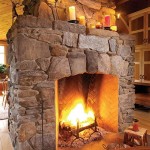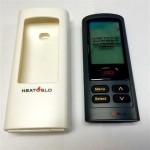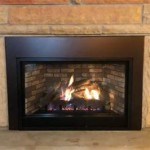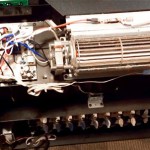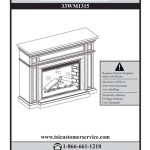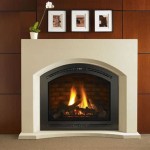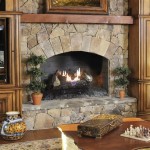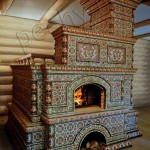Modern Fireplace Screens: Functionality Meets Contemporary Design
Fireplace screens serve a crucial function in mitigating the risks associated with open flames, containing sparks and embers that could otherwise escape the firebox and potentially ignite nearby materials. Beyond their practical purpose, modern fireplace screens have evolved into design elements that enhance the aesthetic appeal of a living space. They are no longer merely utilitarian barriers; instead, they represent a fusion of safety and style, reflecting contemporary design trends and individual preferences.
The modern fireplace screen market offers a diverse range of materials, finishes, and designs, allowing homeowners to select options that seamlessly integrate with their existing décor. From minimalist geometric patterns to intricate artistic expressions, there's a screen to complement virtually any interior design scheme. The selection process involves considering not only the visual appeal but also the functional aspects, such as the screen's construction, dimensions, and ease of use. A well-chosen fireplace screen can significantly elevate the ambiance of a room while providing a protective barrier against fire hazards.
The evolution of fireplace screen design has been driven by advances in manufacturing techniques and materials science. Modern screens can incorporate materials like stainless steel, tempered glass, and powder-coated metals, which offer superior durability and heat resistance compared to traditional options. These advancements have also enabled the creation of more intricate and aesthetically pleasing designs, pushing the boundaries of what is possible in fireplace screen construction.
Material Selection and Durability
The choice of materials plays a crucial role in determining the performance and longevity of a fireplace screen. Steel, particularly wrought iron and stainless steel, is a popular choice due to its strength, heat resistance, and ability to be shaped into various designs. Wrought iron screens often feature intricate detailing and a classic, rustic aesthetic, while stainless steel offers a more modern and minimalist look. The gauge of the steel is an important factor; thicker gauges provide greater durability and resistance to warping under high heat.
Tempered glass is another increasingly common material used in modern fireplace screens. It provides a clear view of the flames while acting as a barrier against sparks and embers. Tempered glass is specifically designed to withstand high temperatures and impact, making it a safe and reliable option. Glass screens are often framed with metal for added support and a refined aesthetic.
Powder coating is a durable and attractive finish often applied to metal fireplace screens. This process involves applying a dry powder to the metal surface and then curing it with heat, creating a smooth, even, and scratch-resistant coating. Powder coating is available in a wide range of colors, allowing homeowners to customize the look of their screen to match their décor. It also provides added protection against rust and corrosion.
The durability of a fireplace screen is directly related to the quality of the materials and construction. Screens that are made from high-quality steel with robust welding and a protective finish will typically last longer and perform better than those made from inferior materials. Regular cleaning and maintenance can also extend the lifespan of a fireplace screen.
Evaluating Design Styles and Aesthetics
Modern fireplace screens are available in a diverse array of design styles, ranging from minimalist and contemporary to ornate and traditional. The choice of design should complement the overall aesthetic of the room and reflect the homeowner's personal style. Geometric patterns, clean lines, and simple silhouettes are characteristic of contemporary designs, while more traditional screens may feature intricate scrollwork, floral motifs, or other decorative elements.
The size and shape of the fireplace opening should also be considered when selecting a screen. Screens are typically available in flat, arched, or folding configurations. Flat screens are suitable for rectangular fireplace openings, while arched screens are designed to fit curved openings. Folding screens, also known as tri-fold screens, offer flexibility in terms of placement and can be adjusted to accommodate different firebox sizes.
Beyond the overall design style, subtle details such as the finish, hardware, and decorative accents can contribute to the screen's aesthetic appeal. Matte black or satin nickel finishes are popular choices for modern screens, while antique brass or copper finishes can add a touch of warmth and character. Decorative handles or knobs can further enhance the screen's visual interest.
Some modern fireplace screens incorporate artistic elements, such as hand-forged details, sculpted metalwork, or stained glass panels. These screens can serve as focal points in the room, adding a unique and personalized touch. When selecting an artistic screen, it's important to ensure that the design complements the other elements in the space and doesn't clash with the overall aesthetic.
Safety Features and Functionality
While aesthetics are important, the primary function of a fireplace screen is to provide safety by preventing sparks and embers from escaping the firebox. The screen should be constructed with a fine mesh that effectively contains hot debris while allowing for adequate airflow to sustain the fire. The mesh should be securely attached to the frame to prevent gaps or openings.
The screen should be sized appropriately to cover the entire fireplace opening, with no gaps or exposed areas. It's also important to ensure that the screen is stable and won't easily tip over or be knocked out of place. Some screens feature legs or feet that provide added stability, while others can be mounted to the fireplace surround for a more secure fit.
Ease of use is another important consideration. The screen should be easy to move or open for adding wood to the fire or cleaning the firebox. Some screens feature hinged doors that allow for convenient access, while others can be easily lifted or slid out of the way. The hinges and other hardware should be durable and operate smoothly.
The screen should be made from materials that can withstand high temperatures without warping, melting, or emitting harmful fumes. Steel and tempered glass are both excellent choices for their heat resistance. It's also important to ensure that the screen is properly ventilated to prevent overheating and potential damage to the surrounding materials. A properly functioning fireplace screen contributes significantly to a safe and enjoyable fireplace experience.
Maintaining the cleanliness of a fireplace screen is crucial for both safety and aesthetics. Regular cleaning will remove soot, ash, and other debris that can accumulate over time, reducing the screen's effectiveness and diminishing its visual appeal. A soft brush or vacuum cleaner can be used to remove loose debris, while a damp cloth and mild detergent can be used to clean the mesh and frame. Avoid using abrasive cleaners or scouring pads, as these can damage the finish. With proper care and maintenance, a modern fireplace screen can provide years of reliable service and enhance the beauty of your living space.

Enhance Your Home S Aesthetic With A Stylish Modern Fireplace Screen Claire Crowe Collection

Flat Fireplace Screen Rejuvenation

Ping For Fire Screens The New York Times

51 Decorative Fireplace Screens To Instantly Update Your

Maddox Modern Stainless Steel Fireplace Screen Cb2

Deco Metal Fireplace Screen West Elm

10 Gorgeous Fireplace Screens For Every Home

12 Best Minimalist Fireplace Screens Liven Design

12 Best Freestanding Fireplace Screens 2024

Willow Arched Fireplace Screen West Elm
Related Posts

